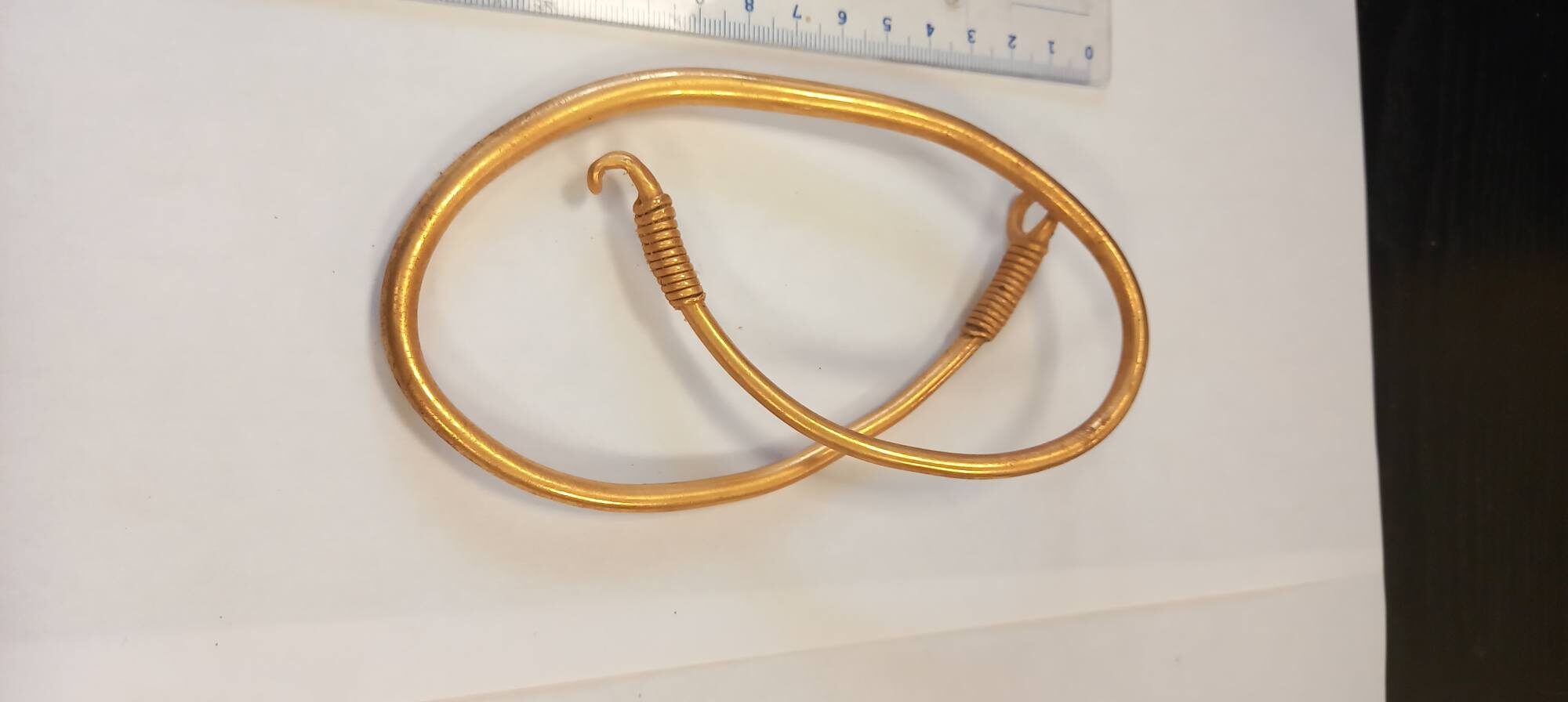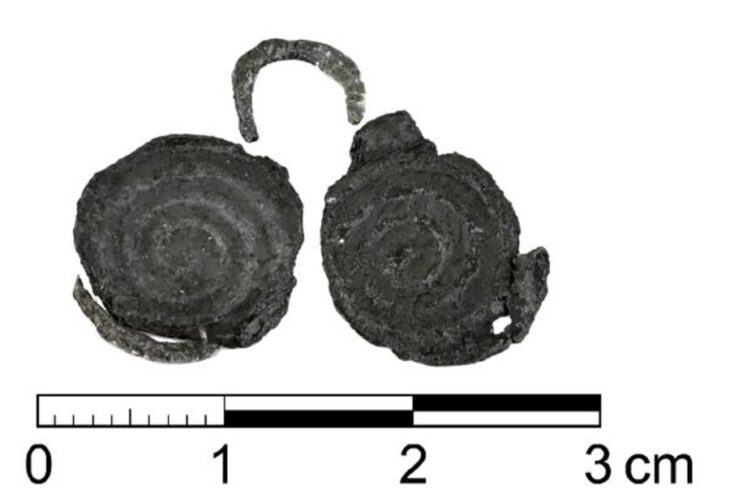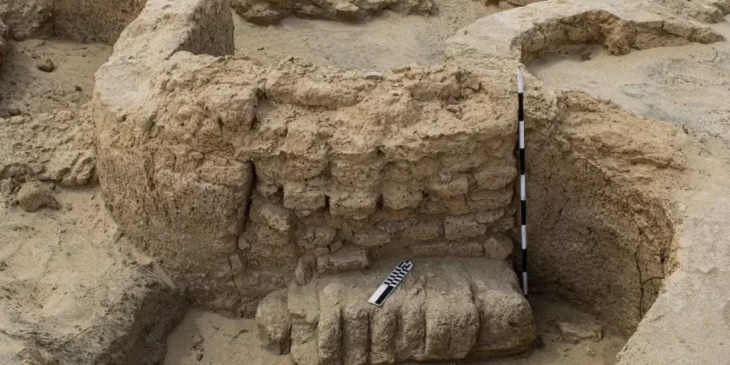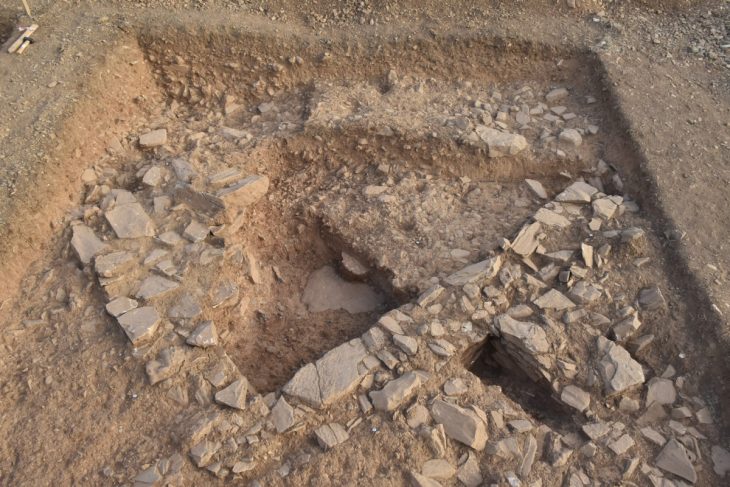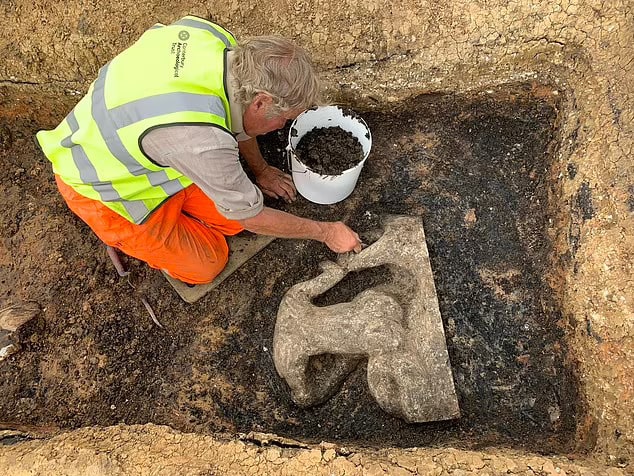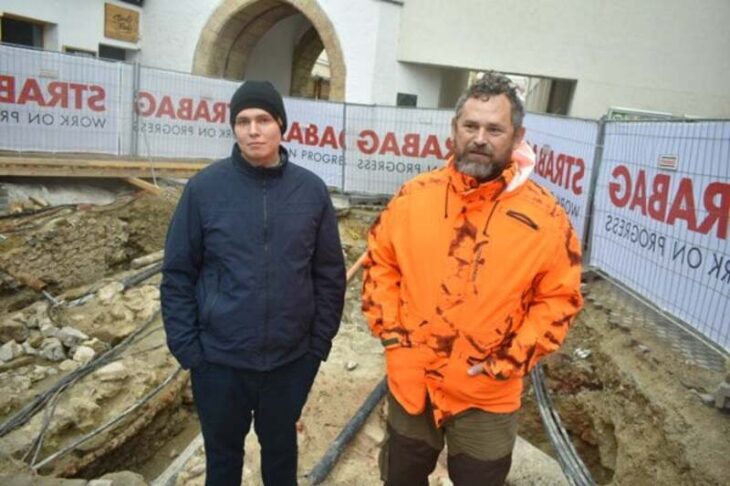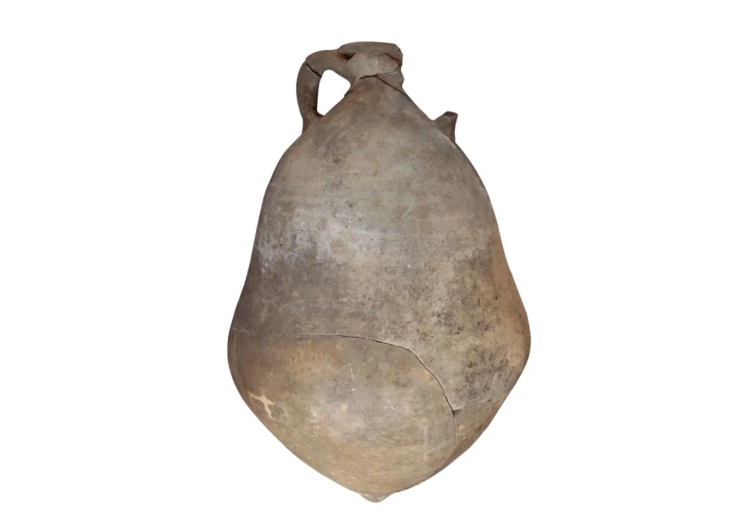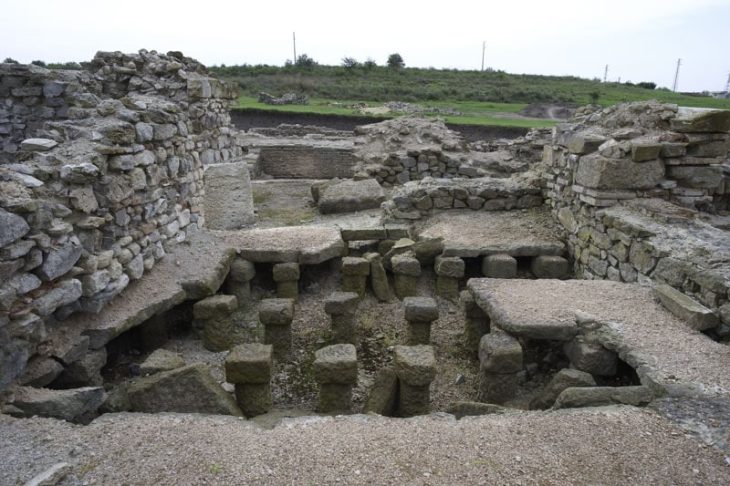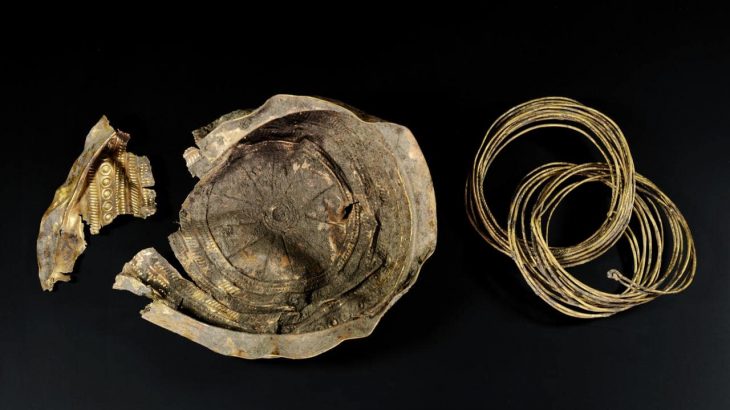A spectacular archaeological find has emerged from the forests near Kalisz, Poland — a massive bent gold necklace weighing an impressive 222 grams. Initially mistaken for a fragment of a gold bracelet, the artifact was unearthed on August 7, 2025, by Mateusz Lachowicz, a member of the historical exploration group SPŚH “DENAR Kalisz”.
According to experts, the necklace may be connected to the Goths, a Germanic people known for their migrations across Europe during the late Roman and Migration Periods. Similar gold ring ornaments have been discovered in Scandinavia, often adorned with runic inscriptions — although this particular example bears no writing, it is considered a complete and remarkably well-preserved piece. Its bright yellow hue suggests it was crafted from nearly pure gold.
Historical and Cultural Significance
In a 2021 article in Wiadomości Archeologiczne, archaeologist Marzena Przybyła noted that gold ring ornaments were among the most frequently referenced prestige items in early medieval Scandinavian literature, especially in the Poetic Edda. These golden rings and bracelets often symbolized royalty, wealth, and generosity, frequently portrayed as gifts from rulers to their warriors — acts that reinforced social and political bonds.
The significance of these objects is reflected not only in literary sources but also in archaeological and artistic evidence, such as the famous Tängelgårda stone from Gotland, which depicts scenes of gift-giving involving gold arm rings.
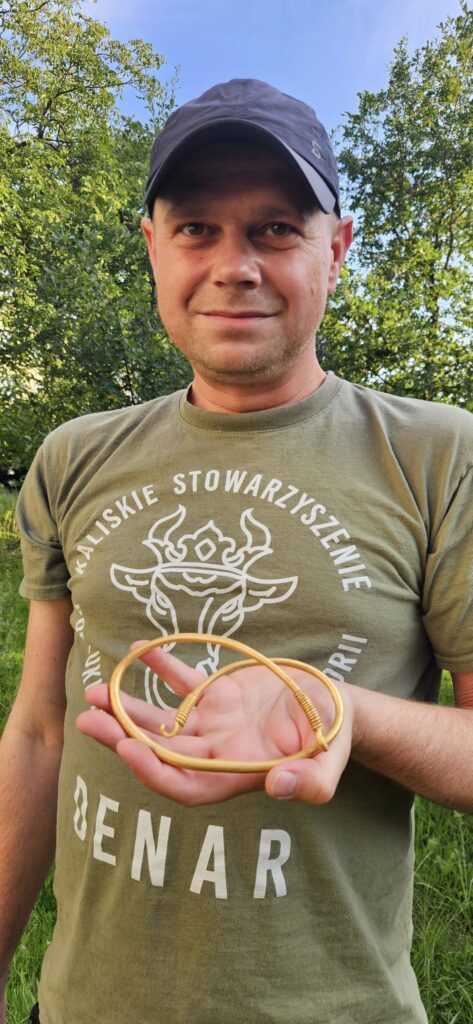
The Goths in Poland
The Goths migrated from Scandinavia to the southern Baltic coast during the early centuries AD, eventually settling in areas such as the Lower Vistula region, Bory Tucholskie, and Krajna. Their presence in Poland played a role in shaping regional history, particularly through interactions with Slavic cultures and participation in the larger Migration Period movements that transformed Europe.
📣 Our WhatsApp channel is now LIVE! Stay up-to-date with the latest news and updates, just click here to follow us on WhatsApp and never miss a thing!!
The discovery of the Kalisz gold necklace provides valuable insight into trade routes, craftsmanship, and cultural exchange between Gothic and Scandinavian societies. Such finds not only expand our understanding of early medieval Europe but also help preserve the tangible heritage of Poland’s ancient past.
Source: Marzena Przybyła, Władcy pierścieni: uwagi o klasyfikacji skandynawskich złotych ozdób obręczowych z późnego okresu rzymskiego i ich implikacje interpretacyjne, Wiadomości Archeologiczne 2021, LXXII(72):3–91.
Images: DENAR Kalisz – Association of Historical Trace Seekers

